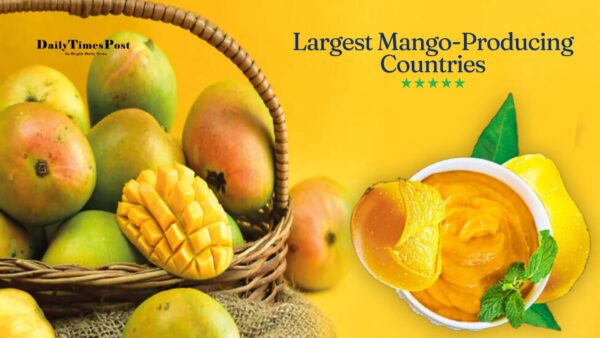Largest Silk Producers: Silk, one of the world’s most cherished textiles, has been cultivated for thousands of years, with production now reaching hundreds of thousands of metric tons annually. With centuries-old traditions blending with modern techniques, each silk-producing country brings unique qualities to this luxurious fabric. Let’s dive into the top 10 silk-producing countries in 2024 and what sets them apart.
Top Silk-Producing Countries
1. China
- Production: 46,700 metric tons
China leads the global silk industry by a wide margin, producing nearly 46,700 metric tons each year. As the birthplace of sericulture, China combines ancient techniques with innovative methods to deliver high-quality silk fabrics worldwide. Chinese silk is renowned for its rich history, craftsmanship, and luxurious quality, making it the preferred choice for high-end fashion. Largest Silk Producers
2. India
- Production: 34,904 metric tons
India follows China as a leading silk producer, offering a diverse range of silk types, including Mulberry, Eri, Tasar, and Muga. The Indian silk industry sustains countless rural livelihoods, and its vibrant, colorful designs continue to capture global attention.
3. Uzbekistan
- Production: 2,037 metric tons
Uzbekistan’s silk industry pays homage to its Silk Road heritage, producing about 2,037 metric tons of silk annually. Known for bold Ikat patterns, Uzbek silk offers a distinctive cultural flair, bridging traditional craftsmanship with contemporary fashion.
4. Vietnam
- Production: 1,067 metric tons
Vietnam’s silk production, highlighted by the famous Van Phuc Silk Village, embodies centuries of traditional weaving techniques. Vietnamese silk is appreciated for its fine texture and durability, making it popular in global fashion circles. Largest Silk Producers
5. Thailand
- Production: 503 metric tons
Thailand produces vibrant silk renowned for its luxurious feel and intricate dyeing techniques. The northeastern region of Isaan is the heart of Thai silk production, where the craft is an integral part of local culture and community.
6. Brazil
- Production: 373 metric tons
As a newcomer to the silk industry, Brazil is South America’s largest silk producer, achieving high production quality through advanced technology and innovative farming practices. Brazilian silk is known for its finer threads, meeting the global demand for superior-quality silk. Largest Silk Producers
7. North Korea
- Production: 370 metric tons
Although lesser-known, North Korea’s silk industry is stable, focusing on self-sustainability. The Kim Jong Suk Silk Mill in Pyongyang is a significant production site, contributing to the country’s steady silk production despite limited global trade interactions.
8. Iran
- Production: 272 metric tons
Silk production in Iran dates back over 3,000 years and is closely tied to the country’s history along the Silk Road. Iranian silk is often used in Persian rugs and high-quality textiles, combining traditional methods with modern enhancements.
9. Bangladesh
- Production: 41 metric tons
Bangladesh’s silk industry, centered in rural areas, emphasizes sustainability and community-based production. Known for its small-scale operations, Bangladeshi silk showcases the country’s commitment to traditional craftsmanship. Largest Silk Producers
10. Japan
- Production: 10 metric tons
Japan’s silk production may be small, but its quality is exceptional. Known for meticulous techniques and cultural importance, Japanese silk is favored in kimono fabrics and represents centuries of refined skill and dedication.
Conclusion
With each country contributing its unique approach, the global silk industry continues to thrive. From the heritage-rich weaves of China and India to the high-tech innovations of Brazil, the silk landscape in 2024 remains as diverse and fascinating as ever. Largest Silk Producers
FAQs about Largest Silk Producers
Why is China the largest silk producer?
China’s extensive history with sericulture and continuous innovation in silk production enable it to produce the highest quality silk at scale, securing its position as the top producer worldwide.
What makes Indian silk unique?
India’s silk industry offers a variety of silk types—Mulberry, Eri, Tasar, and Muga—that come with distinct textures, colors, and cultural significance, making it one of the most diverse silk-producing countries.
Is silk production sustainable in countries like Bangladesh?
Yes, Bangladesh’s silk production often focuses on sustainable and community-driven methods, supporting local economies and reducing environmental impact.
How does Brazil produce such high-quality silk despite being a newcomer?
Brazil uses advanced agricultural techniques and modern silk-farming technology, enabling it to achieve excellent silk quality and compete on a global scale.
Why is Japanese silk production so low?
Japan prioritizes quality over quantity, producing small amounts of silk with an emphasis on craftsmanship. Japanese silk is particularly valued for its use in traditional garments like kimonos.

